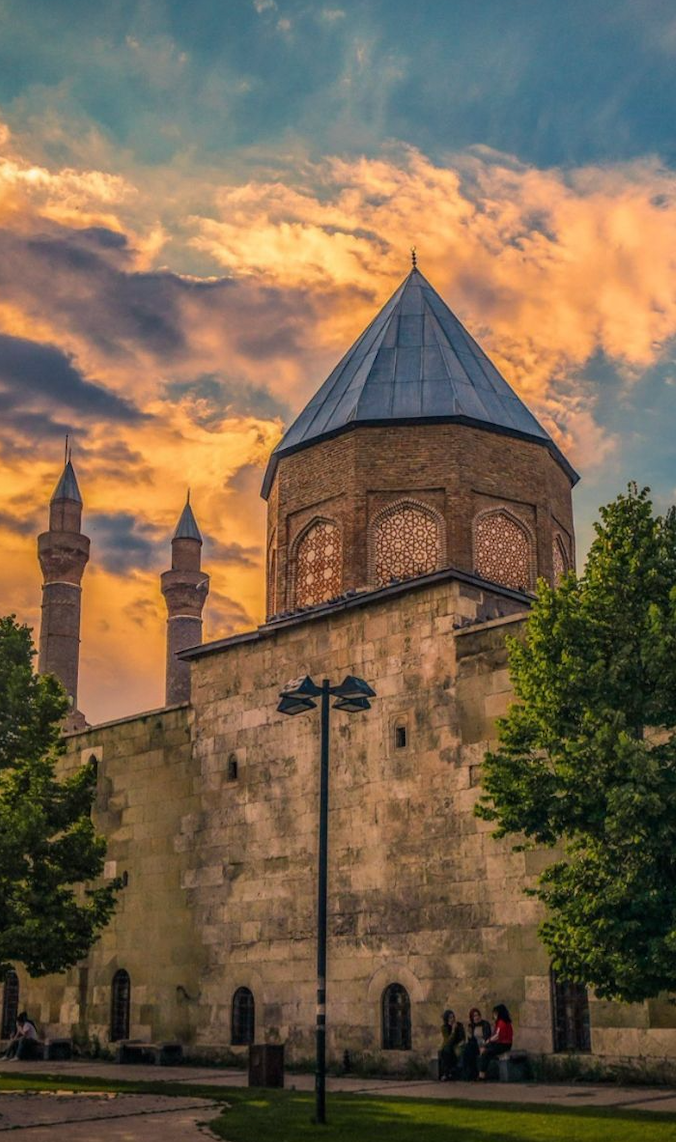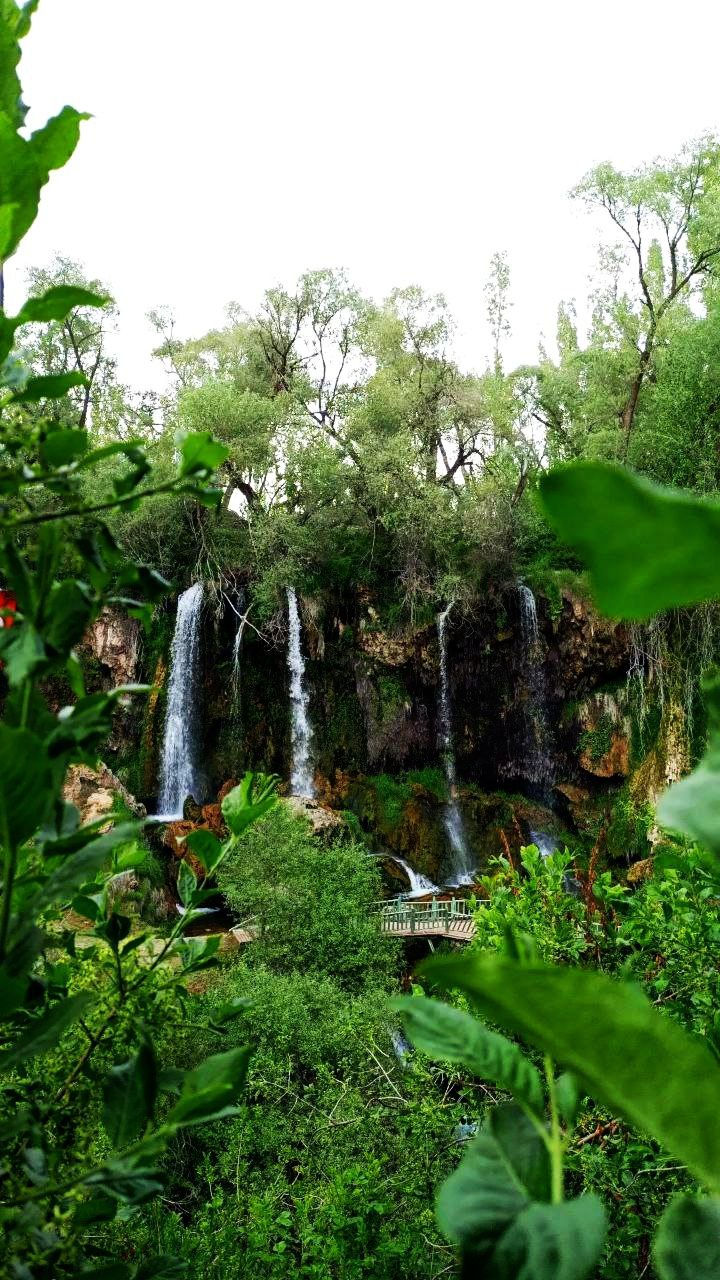🗓️ 2 day
📍 10 station
💰 Expensive
🌎 Cultural and Historical
☁️ Hot Season
👣 Approximately 4.880 steps

While exploring Sivas, your first stop could be the Atatürk Congress and Ethnography Museum, where the foundations of the national resistance movement were laid. Here, you can immerse yourself in the historic atmosphere of the Sivas Congress of 1923 and discover key details of Turkey's fight for independence.
After the museum, you can head to the Sivas Ulu Mosque, the oldest mosque in the city. With its simple yet captivating architecture, this mosque, which has stood since the 11th century, offers visitors a journey back in time.
Next, you might visit the Çifte Minareli Medrese, commissioned by the Ilkhanid Vizier Shams al-Din Juwayni. The unique design and intricately decorated minarets reflect the historical richness of this significant structure in the city, which has hosted many civilizations.
Sivas is also home to Divriği Ulu Mosque and Hospital, the first architectural structure in Turkey to be included on the UNESCO World Heritage List. The city boasts breathtaking nature with its lakes and waterfalls.
Finally, to experience the flavors of Sivas, you can visit Kirli Ahmet Usta, where you can savor the famous Sivas Köfte and the local dessert, Sivas Sütlü Tatlısı. This way, both the taste of the dessert and the experience of your Sivas trip will leave a lasting impression.
🚗 Day 1 - 5 stops
1. Sivas Double Minaret Madrasa

Sivas Çifte Minareli Medrese and Sivas Ulu Mosque may not appear very grand in terms of architecture or stone craftsmanship, but they are significant works from the 11th century Seljuk period. The tilted minaret draws attention, and it is believed that the tilt was intentional during construction, not something that occurred later. Even after nearly 1,000 years, the mosque is still standing, actively in use, and remains one of the important symbols of Sivas.
2. Sivas Atatürk and Congress Museum
This building, a fine example of Late Ottoman civil architecture from the 19th century, is a three-story structure with an inner courtyard. Stone is used on the exterior facades, while wood is the primary material in the interior. The building, which was allocated as the official headquarters for Mustafa Kemal Atatürk and his associates for three and a half months, gained historical significance as it hosted the Sivas Congress meetings. It played a crucial role in organizing the National Struggle in Anatolia and proving to the world that the will of the people was above any pressure, individual, or group rule. Moreover, it is where the foundations of the Republic of Turkey were laid.
3. Gök Medrese (Sky Madrasa)

It is a courtyard-style, two-story madrasa with a four-iwan plan. The turquoise tiles on the mosque to the right of the entrance iwan and the two side iwans have been so striking that they gave the madrasa its name, Gök Medrese (Sky Madrasa). One of the most monumental and exquisite examples of Seljuk art, Gök Medrese is a rare piece where decorative arts and architecture merge seamlessly. Evliya Çelebi also wrote about this madrasa, noting its large gate resembling a fortress entrance and that it had about eighty classrooms and student rooms. He also mentioned that people would stay on the upper floor in summer and the lower floor in winter due to its two-story structure.
🚗 Day 2 - 5 stops
1. Divriğ Grand Mosque

The earliest settlements in Divriği and its surroundings date back to the Hittite Period. The Divriği Great Mosque and Hospital were built in 1228-1229 by Ahmet Shah and his wife Turan Melek during the rule of the Mengücekid Dynasty. This masterpiece of Islamic architecture consists of a mosque with a two-domed tomb and an adjacent hospital. In addition to its architectural features, it showcases rich examples of traditional Anatolian stone craftsmanship and is listed on the UNESCO World Heritage List. The Divriği Great Mosque and Hospital is the first architectural structure from Turkey to be included on this list. While the exterior of the mosque and hospital has a simple architectural appearance, the hospital’s portal, the north portal of the mosque, the west portal, and the Shah Mahfil portal each stand out as architectural and engineering marvels, adorned with unique and dazzling decorations.
2. Gök Pınar Lake

Gökpınar Lake, with its natural beauty, is not only one of the most precious spots in Gürün but also one of the gems of Turkey. Located 10 kilometers from the town center, the lake is known for its sweet, clear, and clean water. The water is so transparent that even in parts where the depth reaches 17-20 meters, you can observe a small object sinking to the bottom and settling there. Another distinctive feature of the lake is that its color changes depending on the angle of the sun. The lake is named after its blue-sky color. Fed by the rocks it rests on and some underwater springs, the lake is divided into two sections. The Small Lake, from which water flows, is used for trout farming, while the Big Lake is a popular spot for tourism. Visitors can camp around the lake and engage in diving activities.
3. Sizir Waterfall

Sızır Waterfall is located 102 kilometers from Gemerek district in Sivas. It is one of the top places to explore, with its waters cascading down vigorously in every season. This area is truly worth seeing, offering a peaceful escape, especially for those living in the Central Anatolia region, who can enjoy a day trip to Sızır Waterfall for tranquil hours. Additionally, this magnificent waterfall is classified as a 2nd-degree natural protected site and has recently gained importance in tourism. Walking paths, wooden bridges, railings, and stairs have been constructed, making the site even more attractive. You can relax by the scenic view, sipping tea and enjoying freshly caught fish.
To view all locations with details:
Comments